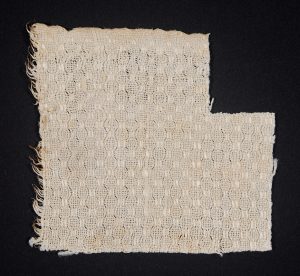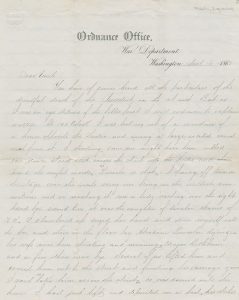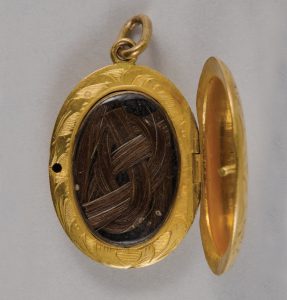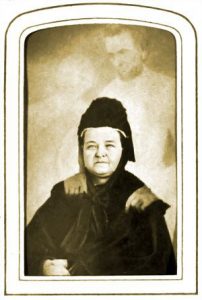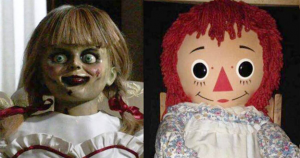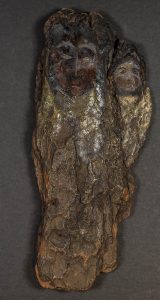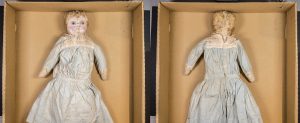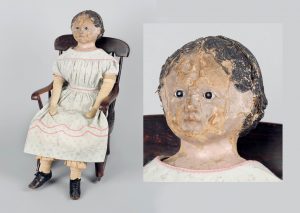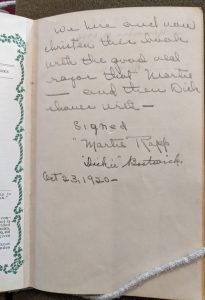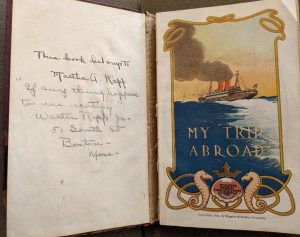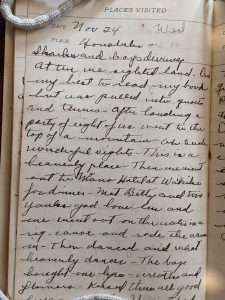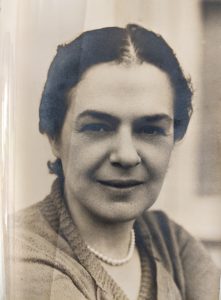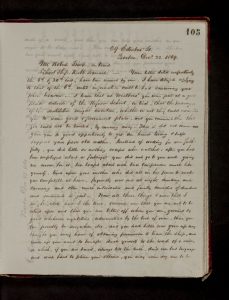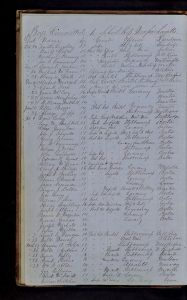By Heather Wilson, MHS Library Assistant
You never know what you’re going to find in the archives! While digging into a collection of papers belonging to Edmund Munroe, a 19th century merchant, on the behalf of a long-distance researcher, I came across his 1794 mathematics example book from his boyhood days. (The schoolmaster asked practice questions that struck my eyes as somewhat forceful. One such question for subtraction stated, “A man was born in the year 1709. I demand his age in the year 1767.”)
After looking at one late 18th century schoolbook, I became eager to see more. Happily, the MHS has quite a few! I read through Sally Parkman’s 1787-1788 floral-covered cyphering book (her teacher asked similar questions Edmund’s asked him, but in a less demanding style); her 1795 French exercises, which I was helpless to read; and, her (undated) penmanship book in which she copied rather humorous templates for letters to various imagined acquaintances and relations. In a 1799 penmanship book, Ann Sprague of Boston, MA, practiced cursive letters and copied poems. An 1832 alphabet practice book I read surely belonged to a toddler – in pencil, little Eleanor Davis wrote slanting lower-case ‘l’s, backwards ‘j’s, and ‘o’s of varying roundness. The book was kept “for her dear father” and was less than three pages long. Surely, Eleanor had more engaging activities to occupy her time!
The Heath Family Papers contain multiple generations of girls’ penmanship and copybooks. Elizabeth Heath Howe’s (b. 1769) penmanship books proved to be the most individual of the bunch. One page also held an unexpected surprise—and had me scrambling to brush up on my Revolutionary War knowledge.
As a child, Elizabeth Heath Howe, then known as “Betsey,” attended the Brookline School. In 1781-1782 she kept a penmanship and copybook. The cover of her book is plain—the faded, splotched, brown paper does not even bear a title, or her name. Inside, however, Betsey’s personality shines through. At the bottom of each page, after copying lines, Betsey saved space for doodles. She always wrote her name, sometimes her school and the date, and then she added her flair.
On 3 July, twelve-year-old Betsey copied lines of “The living know that they must die” and then got to doodling, adding merry faces into two of her swirling lines.

On 9 August, she added squiggly lines, flashes of red ink amongst the black, and her school and the date crammed inside of a heart.

My favorite was when she misspelled her own name. On 19 October, Betsey was so engaged in doodling, she had to add a (^) for the “T” in her name. On the opposite side of the page, she didn’t even notice the missing “S”.

The doodling, however, was not the only unexpected find within Betsey’s book. On each page, above the doodles, Betsey copied down an aphorism, often one that rhymed. Many gave general advice on how to live a good life—according to the values of wealthy, white Anglo-Americans (“Every moment spend unto some useful end”; “Money makes some men mad many merry but few sad”), while also reflecting on mortality (“He that would die well must live well”). Others focused on youth (“In days of youth mind the truth”; “Monuments of learning are the most durable”), and some strike me as clearly gendered (“A handsome face is a letter of recommendation”; “Politeness consists in being easy yourself and making others so”). A few are easily recognizable today (“Necessity is the Mother of Invention”; “Virtue is its own reward.”)
The lines Betsey copied on 26 October 1781, however, were different. “Liberty, peace & plenty to the united states of America,” she wrote. The previous day’s lines had included the book’s only explicit Biblical reference (“Uriahs beautiful wife made King David seek his life”) and then the next day took on a distinctly patriotic tone. This was the only entry from her entire school year that was not a piece of wisdom, or advice. But, why?

On October 19, 1781, in Yorktown, VA, British General Charles Cornwallis surrendered to Gen. George Washington. American and French forces had surrounded British troops in the port town since early in the month, and the siege had cut off the British army from supplies of food and ammunition. Cornwallis agreed to Washington’s Articles of Capitulation, and British troops marched out of Yorktown that very day.
The Revolutionary War did not come to an official end until almost two years later, when the Treaty of Paris was signed on 3 September 1783. The surrender at Yorktown, however, ended any hopes the British had for winning the war. Although historians agree Americans did not fully appreciate the significance of Yorktown at the time, the surrender was widely celebrated.
With the time it took news to travel, it seems many Americans in the northeast first learned about the surrender around 25 October 1781. A search in ABIGAIL, our online catalog, for the subject “Yorktown (Va.)—History—Siege, 1781” sheds some light on this. A sheet printed by John Carter in Providence is titled, “Providence, October 25, 1781. Three o’clock, P.M. [microform]: this moment an express arrived. . . announcing the important intelligence of the surrender of Lord Cornwallis and his army, an account of which was print this morning at Newport. . .” Another, “Colonel Tilgham, aid de camp to His Excellency George Washington, having brought official acounts [sic] of the surrender of Lord Cornwallis” was printed in Philadelphia dated 24 October 1781.
Thus, it seems likely, that Betsey Heath and her classmates copied “Liberty, peace & plenty to the united states of America” into their books just as many people throughout New England were learning about the surrender at Yorktown. They may not have known the war was over, but they—through their teacher—knew it was a day worthy of commemoration.
Looking to do some of your own hands-on research on girls’ education, the Revolutionary War, or any other topic of interest? The MHS is open to researchers on an appointment-only basis. Please read about our Covid-19 resources here and fill out this form to make a research appointment.
For more on the surrender at Yorktown and the end of the Revolutionary War, see:
- Library of Congress: “Surrender at Yorktown”
- Library of Congress: “Revolutionary War: Groping Toward Peace, 1781-1783”


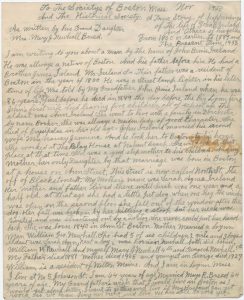
![Abigail Adams Smith, miniature portrait on porcelain tile by an unidentified artist, [18--]](http://www.masshist.org/beehiveblog/wp-content/uploads/2021/11/Abigail-Adams-Smith-251x300.jpg)
